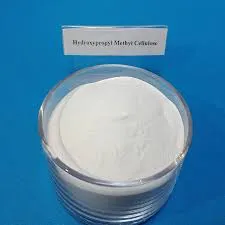
снеж . 12, 2024 03:36 Back to list
uses of hydroxypropyl methylcellulose
Uses of Hydroxypropyl Methylcellulose
Hydroxypropyl methylcellulose (HPMC) is a synthetic polymer derived from cellulose, which is a natural polymer obtained from plants. HPMC is widely utilized in various industries due to its versatile properties, including its ability to form gels, retain moisture, and create a stable film. This unique composition makes HPMC a valuable ingredient across numerous applications, including pharmaceuticals, food, cosmetics, and construction.
Uses of Hydroxypropyl Methylcellulose
The food industry also capitalizes on the unique characteristics of HPMC. It acts as a thickening agent, stabilizer, and emulsifier in various culinary products, improving texture and consistency. For instance, in gluten-free baking, HPMC helps to mimic the structural qualities of gluten, providing elasticity and enhancing the final product's overall mouthfeel. Moreover, it functions as a moisture-retaining agent, which can extend the shelf life of perishable goods by reducing the rate of moisture loss. Since HPMC is derived from plant cellulose, it is acceptable for vegetarian and vegan products, broadening its applicability within health-conscious consumer markets.
uses of hydroxypropyl methylcellulose

In the cosmetics and personal care sector, HPMC serves as a thickening and stabilizing agent in products such as lotions, creams, and gels. Its ability to form a gel-like consistency helps to enhance the texture and spreadability of these products, making them more appealing to consumers. Furthermore, HPMC is used in hair care formulations as a film-forming agent, providing conditioning benefits that improve hair manageability and shine. Its safety profile and compatibility with various skin types make HPMC a popular choice among cosmetic manufacturers.
Construction is another industry that benefits from the use of hydroxypropyl methylcellulose. In cement and mortar formulations, HPMC acts as a water-retention agent, preventing the rapid drying of mixtures and ensuring optimal adhesion and flexibility. This property is crucial in preventing cracking and improving the longevity of structures. Moreover, HPMC enhances the workability of construction materials, making application easier for workers and improving overall efficiency in building projects.
In addition to these primary uses, HPMC has gained attention for its potential applications in emerging fields such as 3D printing and nanotechnology. In 3D printing, HPMC is used as a binder in filament production, contributing to the development of printable materials with improved mechanical properties. Its role in creating micro and nanostructures is also being explored, particularly in drug delivery systems and advanced biomaterials.
In conclusion, hydroxypropyl methylcellulose is a versatile compound with myriad applications across various industries. Its unique properties, such as its ability to form gels, retain moisture, and stabilize formulations, make it an invaluable ingredient in pharmaceuticals, food, cosmetics, and construction, among others. As research continues to unlock further potential uses for HPMC, its significance in the industrial landscape is expected to grow, highlighting the importance of this polymer in our daily lives.
-
Why HPMC is a Key Additive in Wall Putty Formulations
NewsAug.05,2025
-
Redispersible Powder in Decorative Renders: Function Meets Finish
NewsAug.05,2025
-
Redispersible Powder for Interior Wall Putty: Smooth Results Every Time
NewsAug.05,2025
-
HPMC’s Water Retention Capacity in Dry Mortar Applications
NewsAug.05,2025
-
HPMC Factory Contributions to Liquid Detergents
NewsAug.05,2025
-
How HPMC Factory Products Change Detergent Textures
NewsAug.05,2025







